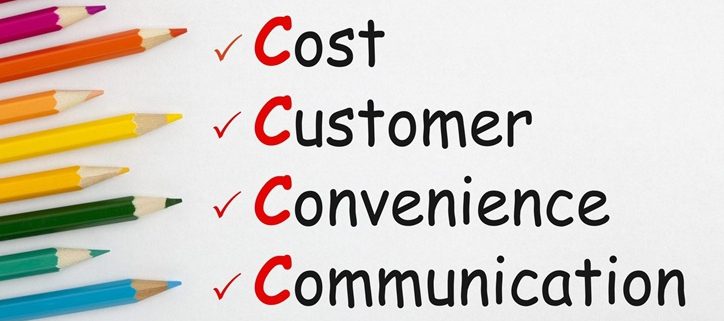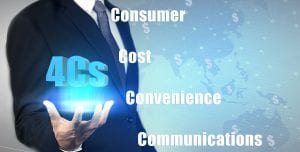
Introducing the 4C Marketing Model and why you should follow it
When it comes to marketing models, the 4P marketing model is the most traditional, business-oriented one — and the one you’re most likely familiar with. The 4Ps represent product, price, promotion, and place. For a more customer-oriented model, you may want to follow the 4C marketing model.
What Are the 4cs of Marketing?
The 4Cs of marketing — Customer, Cost, Convenience, and Communication – represent a customer-centric approach to marketing strategy. The 4Cs of marketing focus on understanding and meeting customer needs and it is customer-centric alternative to the traditional 4Ps. The 4C marketing model was first proposed by Bob Lauterborn in an article published in Advertising Age in 1990. He saw it as a possible effective alternative. The following is a brief breakdown of the 4C marketing model, which consists of consumer, cost, convenience, and communication.
4Cs of Marketing
Consumer
First, you have to know who your target customers are and what their needs and wants are. The consumer should drive all of your marketing efforts from here on out. Having knowledge about your target audience makes it easier to create a product that fulfills a need in the market. This is where your buyer personas come in. Buyer personas represent your ideal customer and once you understand them, you better understand your target audience. This leads to improved communication with your consumers and gives them the sense that you understand them as well, leading to improved sales. Of course, the product is an important focus in any marketing model, but always remember the value of the consumer.
Cost

In the 4Cs marketing model, the cost evaluates the cost considerations from the buyer’s perspective. Determining the cost involves performing detailed research into what customers are able and willing to pay. Additionally, do research into the cost of competing products. The research will aid you in figuring out whether selling your product at a cost that customers are willing to pay will be profitable or not. You will also need to take into account the added costs of purchasing your product outside its sticker price. For example, how much customers will need to pay in taxes, shipping costs or transportation costs.
One thing that’s important to keep in mind is that the price point of your product isn’t what necessarily convinces consumers to purchase your product. A low price point won’t always drive sales, after all. In the end, it’s the benefit of your product that will help support its costs.
Communication
Communication refers to how you will engage with your customers. You will want to find ways to engage with your target customers to build confidence in your brand and your product. Customers want to know how buying your product will benefit them and that’s what you need to focus on communicating. You should focus on providing relevant information to customers in order to help them figure out what their problems, needs, or challenges are. This will then allow you to position your product as a potential solution. This requires that you ask your customers questions and listen to what they have to say. Communication is a two-way street after all.
Promoting products is all about saying what you have to say and hoping the customer buys it. Communication is about strengthening your understanding of your customers and building trust in your brand. One of the best ways to do this is through social media.
Convenience
Convenience focuses on how easy it is for customers to purchase your product. You’ll want to identify potential barriers and figure out ways to remove those barriers in order to improve customer convenience. For example, maybe a poor user interface is preventing potential customers from using your e-commerce site. Providing quality customer support to help make the purchasing process easier is also an important facet of improving convenience.
Also Read: How To Outshine Your Competition with Effective Ecommerce Marketing
In today’s world, the consumer has more power than ever. As such, your marketing efforts will be more successful if you take a more customer-oriented approach. By understanding the importance and using the 4C marketing model, you’ll have more success targeting customers who are actually interested in what you have to offer. Not to mention that such an approach will help you build long-lasting relationships with your customers.
Conclusion:
Adopting the 4C Marketing Model allows businesses to shift their focus from simply selling products to truly understanding and connecting with their customers. If you’re ready to take your marketing to the next level and create a customer-first strategy, Strategy Marketing Agency like Stevens & Tate is here to help you develop tailored marketing solutions that deliver real results. Contact us at 630/627-5200 or Request your FREE Consultation Today!

Mark Beebe oversees all current clients. His secondary focus is leading the creative with original thinkers who provide innovative processes and insightful answers for clients’ marketing needs. His 30+ years has garnered the team to over 50+ national and international awards. As a partner, Mark, looks for unusual solutions to bring smart results and metrics to your bottom line.





